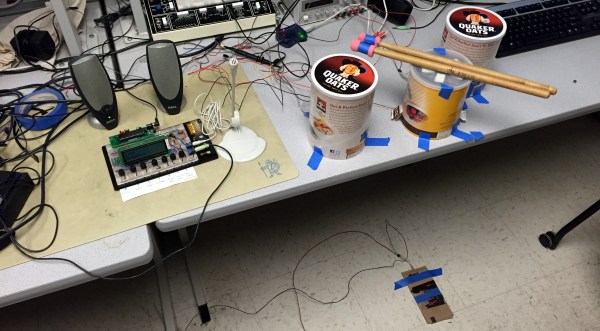Convenient and inexpensive, plastic beverage bottles are ubiquitous in modern society. Many of us have a collection of empties at home. We are encouraged to reduce, reuse, and recycle such plastic products and [Kaboom Percussion] playing Disney melodies on their Bottlephone 2.0 (video embedded below) showcases an outstanding melodic creation for the “reuse” column.
Details of this project are outlined in a separate “How we made it” video (also embedded below). Caps of empty bottles are fitted with commodity TR414 air valves. The pitch of each bottle is tuned by adjusting pressure. Different beverage brands were evaluated for pleasing tone of their bottles, with the winners listed. Pressure levels going up to 70 psi means changes in temperature and inevitable air leakage makes keeping this instrument in tune a never-ending task. But that is a relatively simple mechanical procedure. What’s even more impressive on display is the musical performance talent of this team, assisted by some creative video editing. Sadly for us, such skill does not come in a bottle. Alcohol only makes us believe we are skilled without improving actual skill.
But that’s OK, this is Hackaday where we thrive on building machines to perform for us. We hope it won’t be long before a MIDI-controlled variant is built by someone, perhaps incorporating an air compressor for self-tuning capabilities. We’ve featured bottles as musical instruments before, but usually as wind instruments like this bottle organ or the fipple. This is a percussion instrument more along the lines of the wine glass organ. It’s great to see different combinations explored, and we are certain there are more yet to come.
Continue reading “Pouring Creativity Into Musical Upcycling Of Plastic Bottles”












